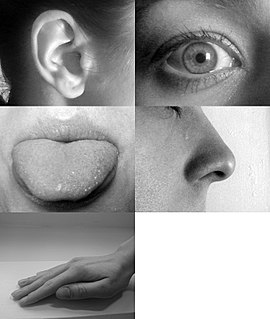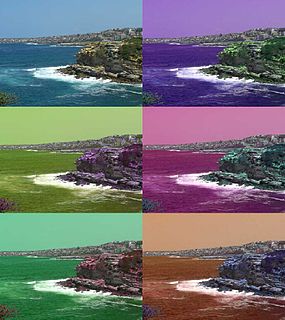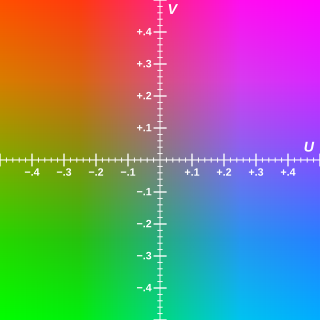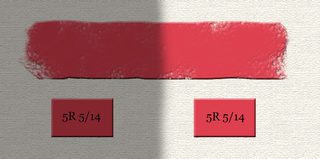This article possibly contains original research .(February 2008) (Learn how and when to remove this template message) |
A perceptual paradox illustrates the failure of a theoretical prediction. Theories of perception are supposed to help a researcher predict what will be perceived when senses are stimulated.
A theory is a contemplative and rational type of abstract or generalizing thinking, or the results of such thinking. Depending on the context, the results might, for example, include generalized explanations of how nature works. The word has its roots in ancient Greek, but in modern use it has taken on several related meanings.

Perception is the means to see, hear, or become aware of something or someone through our fundamental senses. The term perception derives from the Latin word perceptio, and is the organization, identification, and interpretation of sensory information in order to represent and understand the presented information, or the environment.

A sense is a physiological capacity of organisms that provides data for perception. The senses and their operation, classification, and theory are overlapping topics studied by a variety of fields, most notably neuroscience, cognitive psychology, and philosophy of perception. The nervous system has a specific sensory nervous system, and a sense organ, or sensor, dedicated to each sense.
Contents
- Terminology
- Definition
- Mathematical modeling
- History
- Sensory Observations
- Perceptual Observations
- Statements of Paradox
- See:Visual
- Hear:Auditory
- Touch:Tactile
- Smell:Olfactory
- Taste:Gustatory
- Electric
- Conclusion
- References
A theory usually comprises a mathematical model (formula), rules for collecting physical measurements for input into the model, and rules for collecting physical measurements to which model outputs should map. When arbitrarily choosing valid input data, the model should reliably generate output data that is indistinguishable from that which is measured in the system being modeled.
A mathematical model is a description of a system using mathematical concepts and language. The process of developing a mathematical model is termed mathematical modeling. Mathematical models are used in the natural sciences and engineering disciplines, as well as in the social sciences.
Although each theory may be useful for some limited predictions, theories of vision, hearing, touch, smell, and taste are not typically reliable for comprehensive modeling of perception based on sensory inputs. A paradox illustrates where a theoretical prediction fails. Sometimes, even in the absence of a predictive theory, the characteristics of perception seem nonsensical.
This page lists some paradoxes and seemingly impossible properties of perception. When an animal is not named in connection with the discussion, human perception should be assumed since the majority of perceptual research data applies to humans.





















